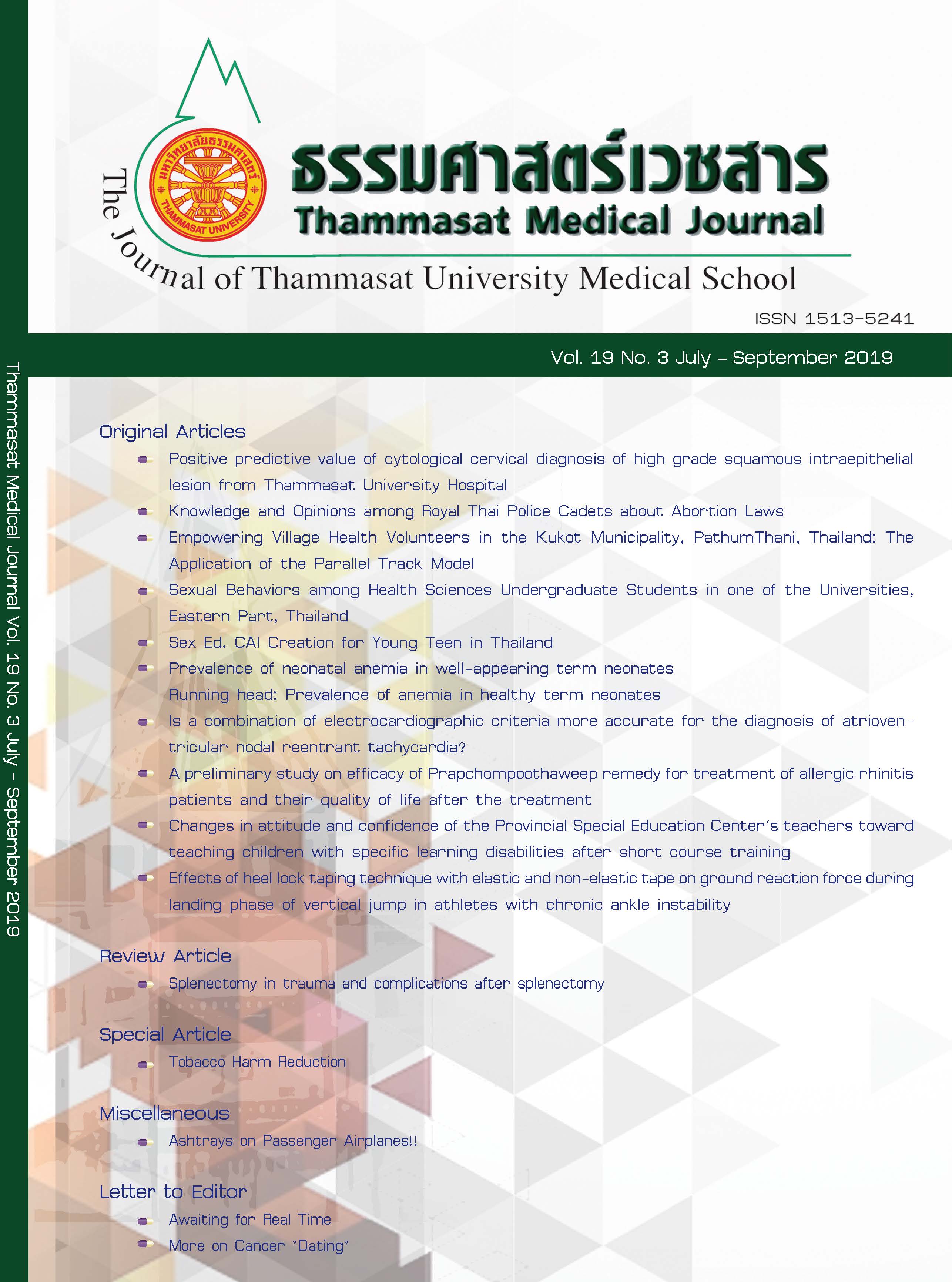Is a combination of electrocardiographic criteria more accurate for the diagnosis of atrioventricular nodal reentrant tachycardia?
Keywords:
Atrioventricular nodal reentrant tachycardia, Atrioventricular reciprocating tachycardia, electrocardiography, diagnostic accuracy, combination criteriaAbstract
Backgrounds: There are 4 electrocardiographic (ECG) criteria: pseudo-r’ in V1 (r’V1), pseudo-s’ in inferior lead (s’inf), notching in aVL (n’aVL) and pseudo-r’ in aVR (r’aVR); for differentiating atrioventricular nodal reentrant tachycardia (AVNRT) from orthodromic atrioventricular reentrant tachycardia (O-AVRT), however clinical useful are limited.
Objective: The propose of this study was to evaluate whether the combination of ECG criteria more accuracy than any single ECG criterion.
Methods: A 12-lead ECG was recorded in 94 consecutive patients with supraventricular tachycardia (SVT) and were reviewed by physicians in the cardiology unit. The SVT mechanism was confirmed by an electrophysiological study.
Results: In our study, the results showed the diagnostic accuracy concerning specificity (Sp), positive predictive value (PPV) and likelihood ratio (LR) as follows: r’V1 (Sp 75 %, PPV 81.6%, LR 1.88), s’inf (Sp 71.4 %, PPV 81%, LR 1.8), n’aVL (Sp 78.6 %, PPV 82.9%, LR 2.05) and r’aVR (Sp 53.6 %, PPV 77.2%, LR 1.44). The accuracy of combination criteria of r’V1 plus n’aVL (Sp 93.1%, PPV 90.0%, LR 4.02) and s’inf plus n’aVL (Sp 89.3%, PPV 87.5%, LR 2.97). These combinations had similar accuracy (P=0.40); and comparable accuracy as the combination of all 4 ECG criteria (LR 4.02 vs 5.09, P=0.60; LR 2.97 vs 5.09, P=0.17, respectively).
Conclusions: Presence of r’V1 plus n’avL or s’inf plus n’aVL provided a good accuracy which better than any single conventional criterion for differentiating between AVNRT and O-AVRT, and may be useful in clinical practice.



